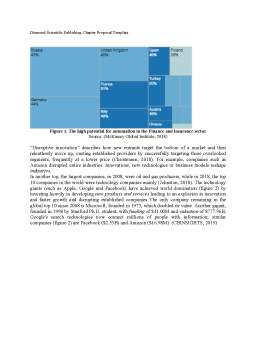Extras din referat
This chapter analyses factors that add value to the businesses in 2020, especially the new businesses from the digital economy.
The aim is to underline the success factors of the e-commerce business as there are businesses that have found continued success (Ryan Holiday).
The factors of the value of the business in 2020 are the main concerns of this chapter, considering that many businesses are still ‘seeking a lifeline to save the business’ (Ed Kaplan). Many firms are struggling, not certain that they will be able to continue the activity. Turbulence is erratic and unpredictable says Friedrich von Metzler, but we must handle it. When we pay attention to “early signs, they give business leaders an outstanding map for how to successfully navigate a company through crises.” (Friedrich von Metzler) “Turbulence and unpredictability are inevitable ( ) We are in truly uncharted waters, with no good maps. Many difficult decisions managers and leaders need to make in turbulent times” (Peter Schwartz). Stability and predictability vanish and instead, companies are knocked, bounded, and punched by conflicting and relentless forces. And sometimes the turbulence will be so continuous as to plunge the whole economy into a downturn, a recession, or possibly a protracted depression. (Philip Kottler)
In the actual economy, many Romanian companies fight hard to find their way to success (or survival), in the absence of one valuable objective of the business and in this chapter we will analyze their objectives. “With the financial tsunami, Kotler and Caslione keenly proposed a significant new theme —Chaotics — to help design more management and marketing resilience in companies aiming to steer profitably through the turbulence, beyond static equilibrium economic theory to dynamic management and marketing theory.” (Professor Taihong Lu)
This chapter researches the enterprise value (EV) and its determinants, in order to understand the ways to increase it or maximize the company value, while considering the theory of value maximization as the single important objective of a company. According to professor Jensen’s theory (2002), it is impossible to maximize in more than one dimension (Jensen, 2002). Wruck, Jensen, and Barry (1991) gave example of a small non-profit firm that almost destroyed itself while trying to maximize over a dozen dimensions at the same time; Cools and van Praag (2000) were the first to formally test the proposition that multiple objectives handicap firms using 80 Dutch firms in the 1993-1997 period, then concluded: "Our findings show the importance of setting one single target for value creation" (Jensen, 2002).
When implementing organizational change, the aim should be the increase in the long-term market value of the firm (MV), which is ‘the sum of the values of all financial claims on the firm, including equity, debt, preferred stock, and warrants’ (Jensen, 2002).
When analyzing successful e-commerce companies’ objectives, we come to agree that they find success when they focus on a single value driven objective for the long term. Difficulties rise when companies waste their efforts and limited resources on too many (unsustainable) objectives for the short term. The company’s strategy is, therefore, of utmost importance.
According to PwC’s EMEA Private Business Survey 2020, ‘51% of private business surveyed are expecting revenues to decline, 57% of agility champions have trained and upskilled their staff, 75% of agility champions see new technologies as key to transformation and 81% of agility champions say sustainable practices are critical in the new COVID-19 normal’.
In the analysis of e-commerce companies, we try to identify the key success factors to be measured in order to be able to model the enterprise value (EV).
Advances in technology have improved access to real-time market information and business analytics, improving communication and the integrated management of their operations; improved telecommunications, information management software and personal computing decreased significantly firm’ costs, enabling the creation of efficient business models.
Although digital services can substantially expand the reach of businesses, they require massive investments in infrastructure and also, skills (OECD, 2015).
The ‘big data’ are datasets large enough that they cannot be managed or analyzed using typical database management tools (OECD 2015). Data analytics, defined as the use of data storage and process techniques to support decisions are becoming a driver for innovation in a number of scientific areas and are used in collaborative and crowd-based projects. Small and medium-sized enterprises (SMEs), and governments have access now to supercomputing resources. (OECD, 2013)
Preview document
Conținut arhivă zip
- Sailing in the storm in 2020 the business to consumer case.doc




